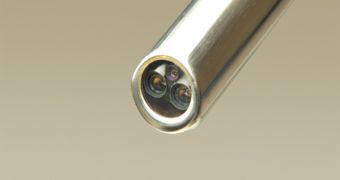Cancer researchers studying the pathology of the disease in its early stages made a potentially groundbreaking discovery. They found out that tiny anomalies at a cellular level could be the triggering event for the formation of cancerous cells. Such irregularities usually occur before cells mutate, which is the leading cause of cancer. Being able to determine which cells have mutation potentials may prove crucial for oncologists performing routine checks on patients, as they would be able to quickly tell if the mutations are dangerous or nor. This technique could also be used to prevent reoccurring cancer.
The discovery, published in the October issue of the Cancer Cell journal, was made by Dr. Garry P. Nolan from the Stanford University School of Medicine and Dr. Mignon L. Loh from the UCSF Children's Hospital, accompanied by scientists at the Helen Diller Family Comprehensive Cancer Center. "Revealing cell subpopulations, even rare cells, that are associated with disease opens additional avenues for (...) assessing biochemical effects of targeted therapies at the single cell level and understanding drug actions and mechanisms of diseases of heterogeneous origins," says Dr. Loh.
In order to do this, the team focused on juvenile myelomonocytic leukemia (JMML), a form of complex leukemia, present in young children. They found that by determining the way proteins are supposed to respond to a certain class of stimuli, they could detect those proteins that are no longer responsive. The second type protein is usually associated with mutating cells. This inability to respond to outside factors could mean that the regular cell has already mutated into a cancerous one and that the disease was triggered. Physicians can then take quick steps to ensure the mutant cells do not take over surrounding tissue.
The scientists used two receptors associated with JMML occurrence – GM-CSF and Ras – to test their thesis. They found that proteins associated with these receptors did not respond to regular stimuli when JMML cells were present. This may open new ways for oncologists to look at cancer, given the fact that they could soon possess a way to detect the formation of the disease at a cellular level, which is a major step forward, considering that most people cancer kills die because they were diagnosed too late.

 14 DAY TRIAL //
14 DAY TRIAL //